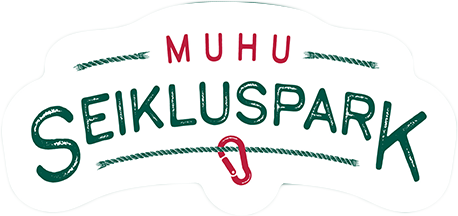Muhu Nature Trail
Muhu Island, together with Saaremaa, Hiiumaa and Vormsi Islands, is part of the UNESCO West-Estonian Archipelago Biosphere Reserve – a territory where harmony and balance between the man and nature is sought; where wildlife, local traditions, and cultural heritage are cherished. Muhu nature trail passes through an area boasting versatile nature and unique island heritage.
What was it like before the trail?
Local islanders of Muhu know this place as Piiri Kiku after a former forest ranger’s farm that stood there many years ago.
In the 1960s, Piiri forest became a site of a Soviet anti-aircraft middle-range missile base. One can still notice the traces of that period: the ruins and debris of deserted buildings, some apple and damson trees, barbed wire grown into their trunks. These fruit trees remind us of the young soldiers who must have really loved apples and spread their seeds having thus helped to propagate fruit trees. An attentive naturalist might even come across a shard of glass or an empty bottle from the past. Every year the soil returns us some of its hidden „treasures“. So, be patient when you see these tokens of the bygone days; learn your lesson and if you can, pick them up and take to the nearest trash can, or notify us of your find.
Some years ago, the area was used as a motocross field by a local motorcycle club. In the motocross field, they used old car tyres as protective guards. Most of the tyres have been taken to recycling, but some are still there having a new function as a waste basket holder, dog track hurdle or a table stand.
Hit our nature trails!
Nature trails went their way through a diverse landscape where the former military structures and groves of trees are in stark contrast. In a wet season, it is wise to have waterproof footwear, as in some places it can be wet. In a long dry period, reeds and dried-out water holes are the only signs of a wetland.
Designated nature trails are natural dirt roads meant mainly for walking. There are two trails: the longer one is marked with blue paint on trees and stones, the shorter one with red paint.
When walking, watch your steps and look in front of your feet in order not to find yourself confronted by an occasional viper whose home is near the trail. And please be aware that as much as we try, we are not able to teach all the ticks, mosquitoes, horse flies and wasps to keep away from the hiking trail.
You will see different plants and insects around you; and if you move quietly, you can observe birds. To learn more about bird species, please see the information boards along the trail.
Birds
In addition to the information boards introducing bird species, there is also a display of nest boxes and one can trace at least 20 nest boxes for various birds nesting in hollows. Great tits (Parus major) and European pied flycatchers (Ficedula hypoleuca) are the most numerous dwellers of the nest boxes.
Quite common are also the nightingale (Luscinia luscinia), the European robin (Erithacus rubecula), the Eurasian blackbird (Turdus merula), the song thrush (Turdus philomelos), the common chiffchaff (Phylloscopus collybita), the willow warbler (Phylloscopus trochilus), the lesser whitethroat (Sylvia curruca), the common whitethroat (Sylvia communis), and the common rosefinch (Carpodacus erythrinus).
Did you know that the surrounding forests provide a habitat for some protected bird species: the Northern goshawk (Accipiter gentilis), the parrot crossbill (Loxia pytyopsittacus), but also the black woodpecker (Dryocopus martius) and the Northern nutcracker (Nucifraga caryocatactes)? An attentive visitor can watch these birds while on the trail. In the former military structures that are located in the central part of the area are nesting barn swallows (Hirundo rustica). In the dusk of late spring and early summer nights woodcocks fly around.
Butterflies and other insects
Since the very first sunny days in early spring until September, hikers can observe butterflies. Did you know that butterflies have an important role in the ecosystem? A butterfly has four lifecycle stages: egg, larva, pupa, and adult. The adult and larva eat, grow and move; the egg and pupa seem to be static, but changes are taking place inside them. Birds, small mammals, predatory insects and parasites feed on butterflies in all their stages and this food is available throughout the year. Adult butterflies are pollinators of plants.
The trail crosses with the routes of ants and after Midsummer grasshoppers start their endless chirping.
Insects pollinate plants when they suck the sweet nectar that plants produce to attract insects. Using their hairy legs and body insects transport pollen from one plant to another.
Plants
The area of the trail is home for different plant species. One can learn surprising facts and gain new knowledge about their use and plant-related health risks. There can be found several useful plants and herbs: the bear’s or wild garlic, the biggest orchid in Estonia and others.
Did you know that there are dandelion species that can be used as sources of natural rubber, or that the cowslip is a natural antibiotic? Take the nature trail and find out!
Let us explore together this wealth of wildlife around us, let us take care of it and learn to commune with nature!
The trail is developed and maintained by: MTÜ Õpituba +372 528 0387 info@muhuseikleja.ee
